Filter by
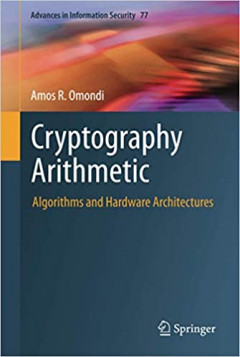
Cryptography arithmetic: algorithms and hardware architectures (advances in i…
This book is an introduction to the implementation of cryptosystems at that level. The aforementioned arithmetic is mostly the arithmetic of finite fields, and the book is essentially one on the arithmetic of prime fields and binary fields in the context of cryptography. The book has three main parts. The first part is on generic algorithms and hardware architectures for the basic arithmetic op…
- Edition
- -
- ISBN/ISSN
- 9783030341411
- Collation
- xiv, 336 hlm.: ilus.; 24 cm
- Series Title
- Advances in Information Security Book 77
- Call Number
- 005.82 OMO c
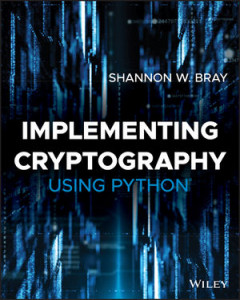
Implementing cryptography using python
Cryptography is, quite simply, what makes security and privacy in the digital world possible. Tech professionals, including programmers, IT admins, and security analysts, need to understand how cryptography works to protect users, data, and assets. Implementing Cryptography Using Python will teach you the essentials, so you can apply proven cryptographic tools to secure your applications and sy…
- Edition
- -
- ISBN/ISSN
- 9781119612209
- Collation
- xix, 304 hlm.; 24 cm
- Series Title
- -
- Call Number
- 005.82 BRA i

Cryptology for engineers: an application-oriented mathematical introduction
Cryptology for Engineers is a study of digital security in communications systems. The book covers the cryptographical functionalities of ciphering, hash generation, digital signature generation, key management and random number generation, with a clear sense of the mathematical background on the one hand and engineers' requirements on the other. Numerous examples computable by hand or with a s…
- Edition
- -
- ISBN/ISSN
- 9789811208041
- Collation
- xx, 384 hlm; 23 cm
- Series Title
- -
- Call Number
- 005.82 SCH c

The digital big bang : the hard stuff, the soft stuff, and the future of cybe…
- Edition
- -
- ISBN/ISSN
- 9781119617365
- Collation
- xxviii, 306 hlm.: ilus.; 24 cm
- Series Title
- -
- Call Number
- 005.8 QUA t
- Edition
- -
- ISBN/ISSN
- 9781119617365
- Collation
- xxviii, 306 hlm.: ilus.; 24 cm
- Series Title
- -
- Call Number
- 005.8 QUA t
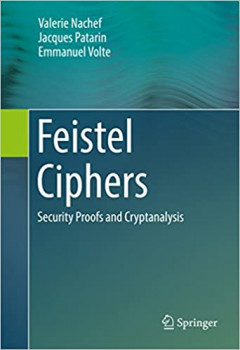
Feistel ciphers : security proofs and cryptanalysis
This book provides a survey on different kinds of Feistel ciphers, with their definitions and mathematical/computational properties. Feistel ciphers are widely used in cryptography in order to obtain pseudorandom permutations and secret-key block ciphers. In Part 1, we describe Feistel ciphers and their variants. We also give a brief story of these ciphers and basic security results. In Part 2,…
- Edition
- -
- ISBN/ISSN
- 9783319495286
- Collation
- xv, 309 hlm.: ilus.; 24 cm
- Series Title
- -
- Call Number
- 005.82 NAC f
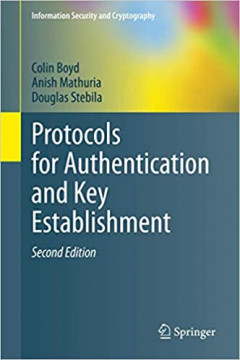
Protocols for authentication and key establishment
This book is the most comprehensive and integrated treatment of the protocols required for authentication and key establishment. In a clear, uniform presentation the authors classify most protocols in terms of their properties and resource requirements, and describe all the main attack types, so the reader can quickly evaluate protocols for particular applications. In this edition the author…
- Edition
- 2nd Edition
- ISBN/ISSN
- 9783662581452
- Collation
- xxviii, 521 hlm.: ilus.; 24 cm
- Series Title
- Information Security and Cryptography
- Call Number
- 005.82 BOY p
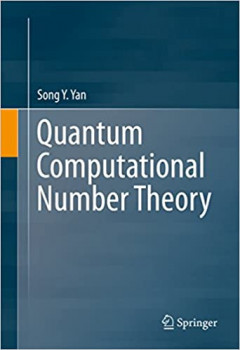
Quantum computational number theory
This book provides a comprehensive introduction to advanced topics in the computational and algorithmic aspects of number theory, focusing on applications in cryptography. Readers will learn to develop fast algorithms, including quantum algorithms, to solve various classic and modern number theoretic problems. Key problems include prime number generation, primality testing, integer factorizatio…
- Edition
- -
- ISBN/ISSN
- 9783319798462
- Collation
- ix, 252 hlm.: ilus.; 23 cm
- Series Title
- -
- Call Number
- 512.7 YAN q

Post-quantum cryptography
Quantum computers will break today's most popular public-key cryptographic systems, including RSA, DSA, and ECDSA. This book introduces the reader to the next generation of cryptographic algorithms, the systems that resist quantum-computer attacks: in particular, post-quantum public-key encryption systems and post-quantum public-key signature systems. Leading experts have joined forces for the …
- Edition
- -
- ISBN/ISSN
- 9783540887010
- Collation
- viii, 245 hlm.: ilus.; 24 cm.
- Series Title
- -
- Call Number
- R005.82 BER p

Writing secure code
Table of contents: Part I: Contemporary Security Chapter 1: The Need for Secure Systems Chapter 2: The Proactive Security Development Process Chapter 3: Security Principles to Live By Chapter 4: Threat Modeling Part II: Secure Coding Techniques Chapter 5: Public Enemy #1: The Buffer Overrun Chapter 6: Determining Appropriate Access Control Chapter 7:…
- Edition
- Second Edition
- ISBN/ISSN
- 0735617228
- Collation
- xxviii, 768 hal.; ilus.; 24 cm
- Series Title
- --
- Call Number
- 005.8 HOW w
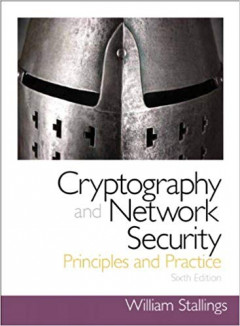
Cryptography and network security: principle and practice
Anak judul: principles and practice. Termasuk bibliografi dan indeks. CONTENTS: Chapter 1 Overview 1.1 Computer Security Concepts 1.2 The OSI Security Architecture 1.3 Security Attacks 1.4 Security Services 1.5 Security Mechanisms 1.6 A Model for Network Security 1.7 Recommended Reading 1.8 Key Terms, Review Questions, and Problems Pa…
- Edition
- Sixth Edition
- ISBN/ISSN
- 9780133354690
- Collation
- xix, 731 hlm.; ilus.; 24 cm.
- Series Title
- null
- Call Number
- 005.82 STA c
 Computer Science, Information & General Works
Computer Science, Information & General Works  Philosophy & Psychology
Philosophy & Psychology  Religion
Religion  Social Sciences
Social Sciences  Language
Language  Pure Science
Pure Science  Applied Sciences
Applied Sciences  Art & Recreation
Art & Recreation  Literature
Literature  History & Geography
History & Geography